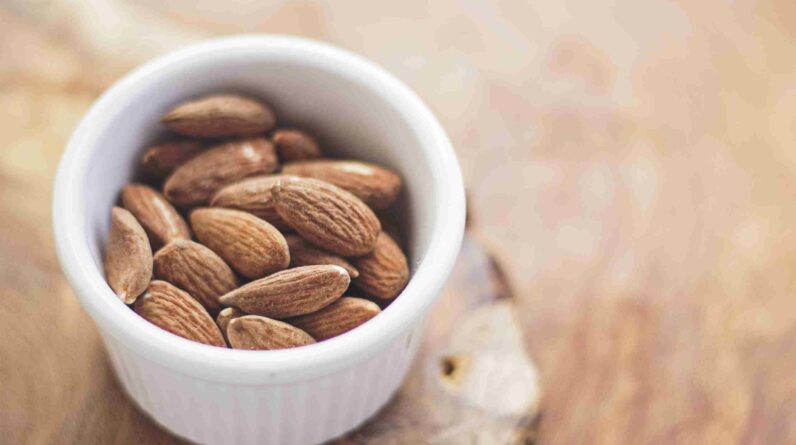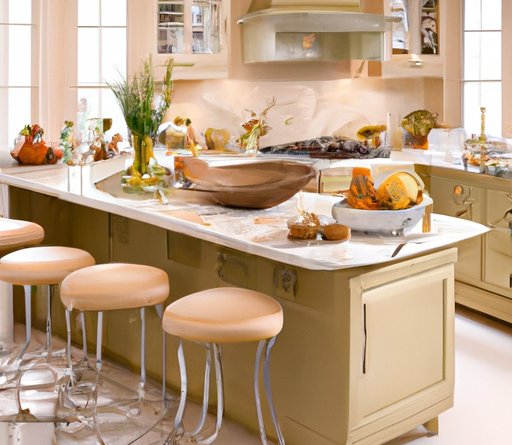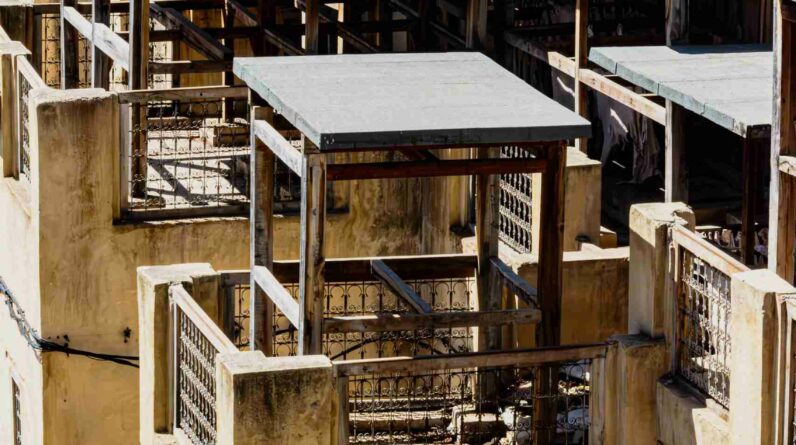When it comes to cooking with cast iron, many people wonder if it’s safe to use old, vintage cookware. We all love the idea of cooking a delicious meal in a seasoned, well-worn skillet passed down through generations. But concerns may arise about the safety of using cast iron that has been used for years or even decades. In this article, we will explore the potential risks and benefits of using old cast iron cookware, so you can make an informed decision about what’s best for your kitchen.
Overview
Introduction to old cast iron cookware
Old cast iron cookware has a rich history and has been a staple in kitchens for centuries. These durable and heat-retaining kitchen tools have become beloved items that are cherished by many. Whether it’s inherited from a family member or found at a flea market, old cast iron cookware often holds sentimental value and adds a touch of nostalgia to our cooking adventures.
The safety concerns associated with using old cast iron cookware
While old cast iron cookware has many advantages, there are also some important safety concerns to be aware of. Over time, cast iron can rust, develop cracks, or become contaminated with harmful substances. In this article, we will explore the different safety aspects of using old cast iron cookware and provide tips on how to mitigate these concerns.
Seasoning and Rust
Effect of seasoning on old cast iron cookware
Seasoning is an essential process for maintaining and protecting old cast iron cookware. By applying a layer of oil and baking it in the oven, we create a non-stick surface that enhances the cooking experience. Seasoning not only prevents food from sticking to the pan but also helps to seal any small cracks or imperfections in the cast iron. This process not only enhances the flavor of our meals but also adds a beautiful patina to the cookware, showcasing its history and character.
Dealing with rust on old cast iron cookware
One of the common challenges with old cast iron cookware is the presence of rust. Rust can occur when the protective layer of seasoning is compromised or when the cookware is not properly dried after use. If we notice any rust spots on our cast iron cookware, it is essential to take action swiftly. We can use a scrub brush or steel wool to gently remove the rust, ensuring not to damage the seasoned surface. After removing the rust, it is vital to re-season the cookware to restore its protective layer and prevent further rusting.
Contamination
Potential contamination from old cast iron cookware
Another safety concern when using old cast iron cookware is the potential for contamination. The porous nature of cast iron can absorb flavors, odors, and even contaminants from previous cooking sessions. This is particularly worrisome when cooking acidic or highly seasoned foods, as they can break down the seasoning layer and expose the cookware to potential contaminants.
Preventing contamination in old cast iron cookware
To prevent contamination, it is important to be diligent in cleaning our old cast iron cookware after each use. Using mild detergent and warm water, we can thoroughly clean the cookware, ensuring to remove any food particles or oils that may have adhered to the surface. Additionally, it is essential to avoid cooking highly acidic or strongly seasoned foods in old cast iron cookware, as these can accelerate the breakdown of the seasoning and increase the risk of contamination.
Health Risks
Possible health risks from using old cast iron cookware
Using old cast iron cookware can potentially expose us to certain health risks. For instance, the presence of rust or corrosion in the cookware can lead to iron leaching into our food, which can be harmful in excessive amounts. Ingesting large quantities of iron can cause gastrointestinal issues and may be particularly concerning for individuals with conditions such as hemochromatosis.
Understanding the impact of toxins in old cast iron cookware
Apart from iron leaching, old cast iron cookware may also contain traces of lead or other harmful substances that were used in older manufacturing processes. While the chances of significant exposure to these toxins are relatively low, it is still important to be cautious, especially when cooking acidic or high-heat foods. By properly maintaining our old cast iron cookware and following safe cooking practices, we can minimize the potential risks associated with these toxins.
Maintenance
Cleaning and maintenance recommendations for old cast iron cookware
Proper cleaning and maintenance are crucial for ensuring the longevity and safety of old cast iron cookware. After each use, it is important to wash the cookware with mild detergent and warm water, and then thoroughly dry it to prevent rust. Avoid using harsh cleaning agents or abrasive scrub brushes, as they can damage the seasoning layer. Additionally, periodically re-seasoning the cookware will help to maintain its protective coating and prevent rust or contamination.
Longevity of old cast iron cookware with proper care
With proper care and maintenance, old cast iron cookware can last for generations. By regularly seasoning, cleaning, and storing the cookware in a dry and well-ventilated area, we can prolong its lifespan. It is important to inspect the cookware regularly for any signs of rust or damage and take prompt action to address these issues. By investing time and effort into the maintenance of our old cast iron cookware, we can continue to enjoy its benefits for years to come.
Authenticity and Quality
Identifying authentic and high-quality old cast iron cookware
As the popularity of old cast iron cookware grows, there is an increased risk of encountering forgeries and counterfeits in the market. To ensure the authenticity and quality of our cookware, it is important to familiarize ourselves with the characteristics of genuine old cast iron. Authentic pieces often have distinct markings, such as the logo or brand name of the manufacturer, as well as a smooth surface and well-fitting lids. Researching reputable brands and purchasing from trusted sources is essential to avoid counterfeit products.
Forgeries and counterfeits in the market
Unfortunately, the market for old cast iron cookware is not immune to forgeries and counterfeits. Some unscrupulous sellers may attempt to pass off modern reproductions or lower-quality cast iron as antique or high-quality pieces. These counterfeit products may not have the same safety features or durability as authentic old cast iron cookware. Being aware of potential red flags, such as unusually low prices or inconsistent quality, can help us avoid falling victim to these counterfeit items.
Value and Collectibility
Factors determining the value of old cast iron cookware
Old cast iron cookware can hold significant value, both in terms of monetary worth and cultural significance. Several factors contribute to the value of these items, including rarity, age, condition, and the brand or manufacturer. Cookware produced by renowned makers, such as Griswold or Wagner, tends to command higher prices due to their craftsmanship and historical appeal. Additionally, limited edition or unique designs are often sought-after by collectors, adding to the value of old cast iron cookware.
Collecting and preserving old cast iron cookware
For enthusiasts and collectors, old cast iron cookware can be a fascinating and rewarding hobby. By building a collection of different pieces, we can appreciate the diversity and artistry of vintage cookware. When collecting, it is important to store the cookware properly to prevent damage or deterioration. Displaying the pieces in a well-lit area and avoiding exposure to extreme temperature or humidity changes will help to preserve their condition and value.
Alternatives
Considerations for alternative cookware options
While many people appreciate the charm and timelessness of old cast iron cookware, it may not be suitable for everyone. Alternative cookware options offer different advantages and considerations, depending on our needs and preferences. Non-stick pans made from modern materials such as ceramic or stainless steel are popular choices due to their ease of use and low maintenance. Additionally, enameled cast iron cookware provides a balance between the benefits of cast iron and the convenience of a non-reactive cooking surface.
Comparing the benefits and drawbacks
When weighing the pros and cons of alternative cookware options, it is important to consider factors such as heat distribution, durability, ease of cleaning, and price. While old cast iron cookware excels in heat retention and versatility, it requires more care and maintenance compared to some modern alternatives. Ultimately, the choice of cookware depends on personal preferences and cooking needs. It is important to find the right balance between convenience and the unique qualities that old cast iron cookware offers.
Expert Opinions
Insights from chefs and culinary professionals on using old cast iron cookware
Chefs and culinary professionals have long been advocates of old cast iron cookware, appreciating its ability to heat evenly and retain heat. Many chefs consider old cast iron pans as essential tools for achieving desired results in certain culinary techniques. However, they also acknowledge the safety concerns associated with older cookware. Some chefs recommend using vintage cast iron cookware for specific purposes, such as searing or baking, while opting for modern alternatives for highly acidic or delicate dishes.
Balancing safety and tradition
When it comes to using old cast iron cookware, it is crucial to strike a balance between honoring culinary traditions and ensuring our safety. While it may be tempting to rely solely on sentimentality, it is important to prioritize our health and wellbeing. By being aware of the potential risks, following proper care and maintenance techniques, and making informed choices about the foods we cook in old cast iron cookware, we can enjoy the best of both worlds.
Conclusion
Final thoughts on the safety of using old cast iron cookware
Old cast iron cookware holds a cherished place in many kitchens, evoking nostalgia and becoming a cherished heirloom. While there are safety concerns associated with using old cast iron cookware, the risks can be managed with proper care and precautions. By understanding the importance of seasoning, preventing contamination, and being mindful of potential health risks, we can continue to enjoy the benefits of old cast iron cookware while ensuring our safety. Whether we choose to use old cast iron cookware for its unique cooking properties or to build a collection, it is important to balance tradition with responsible practices to create a safe and enjoyable cooking experience.









